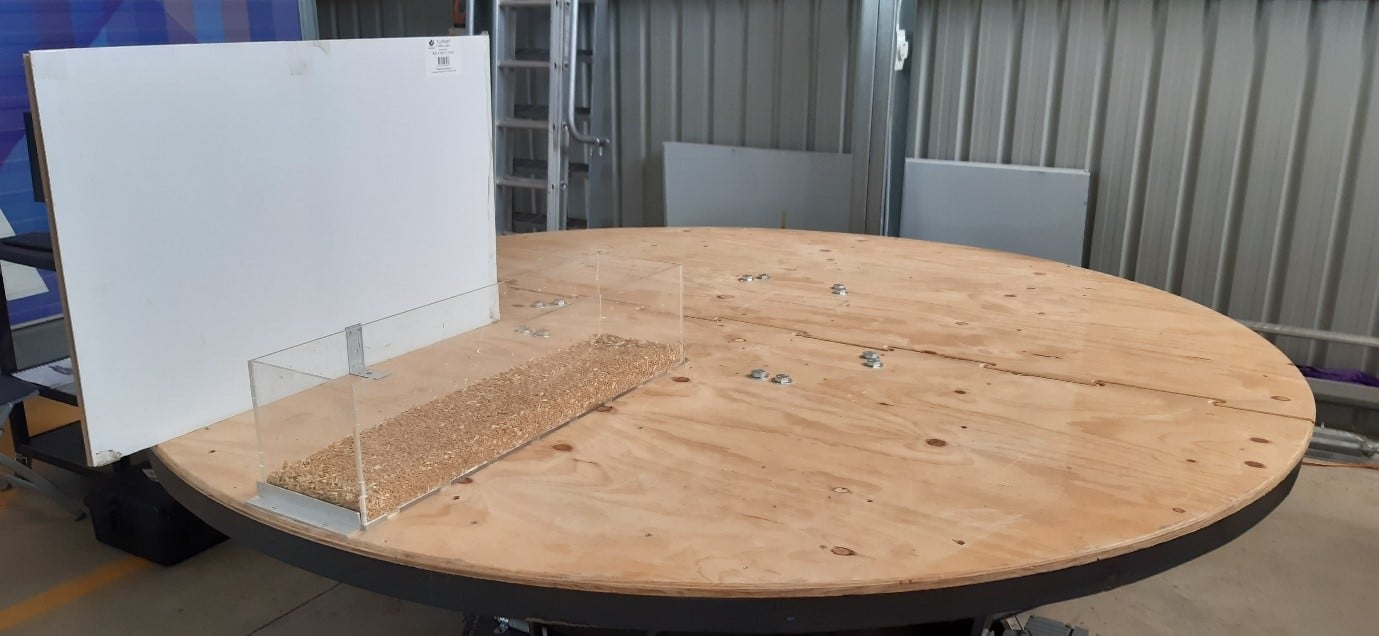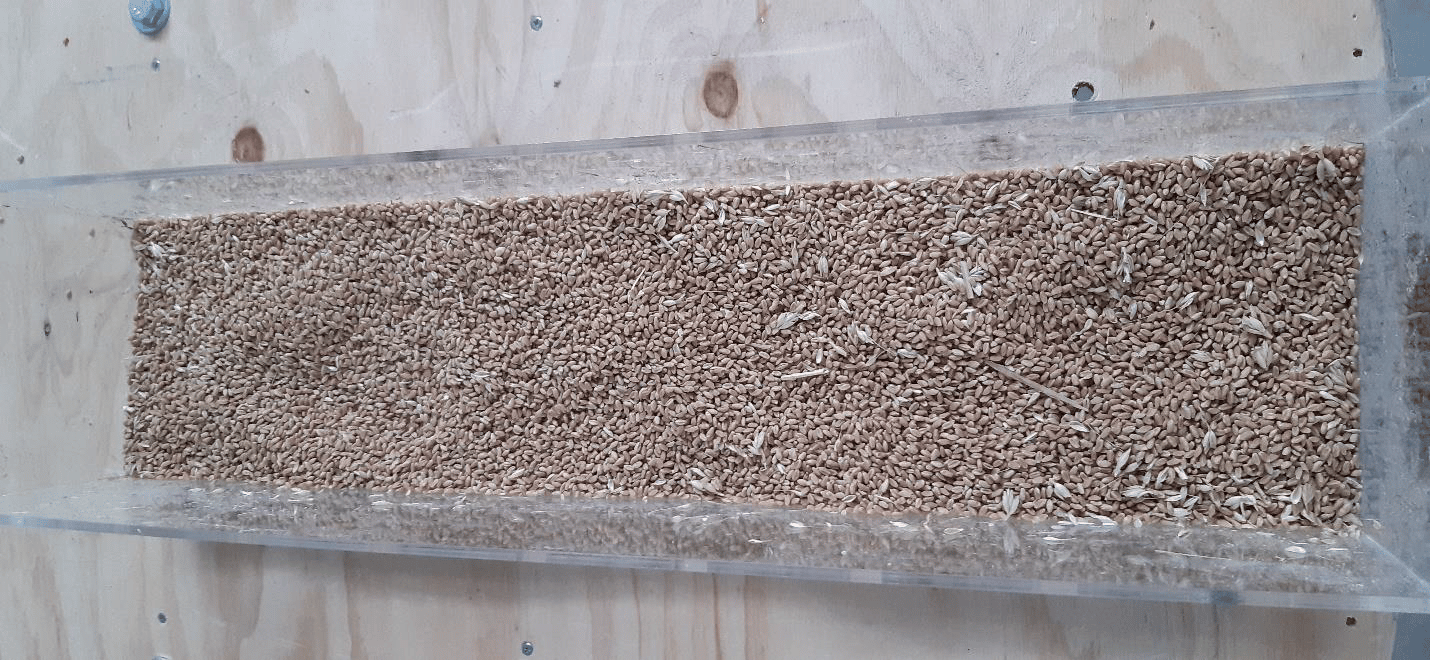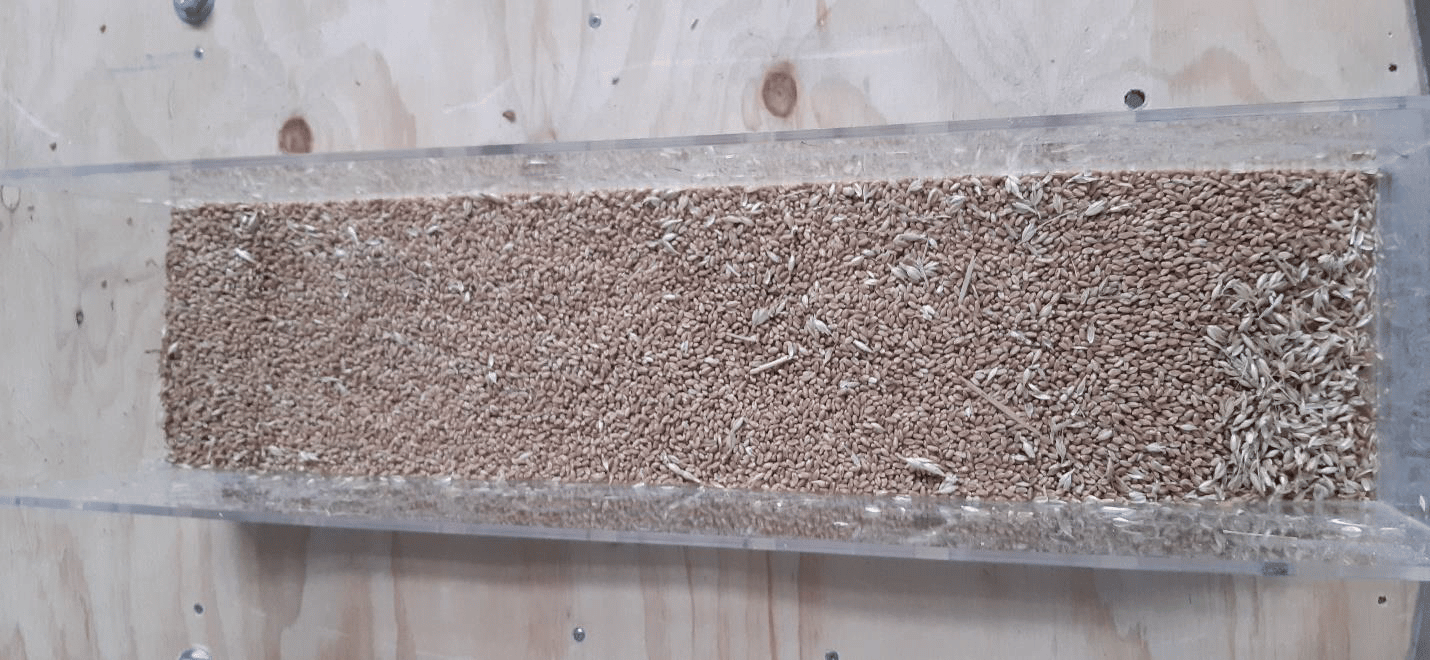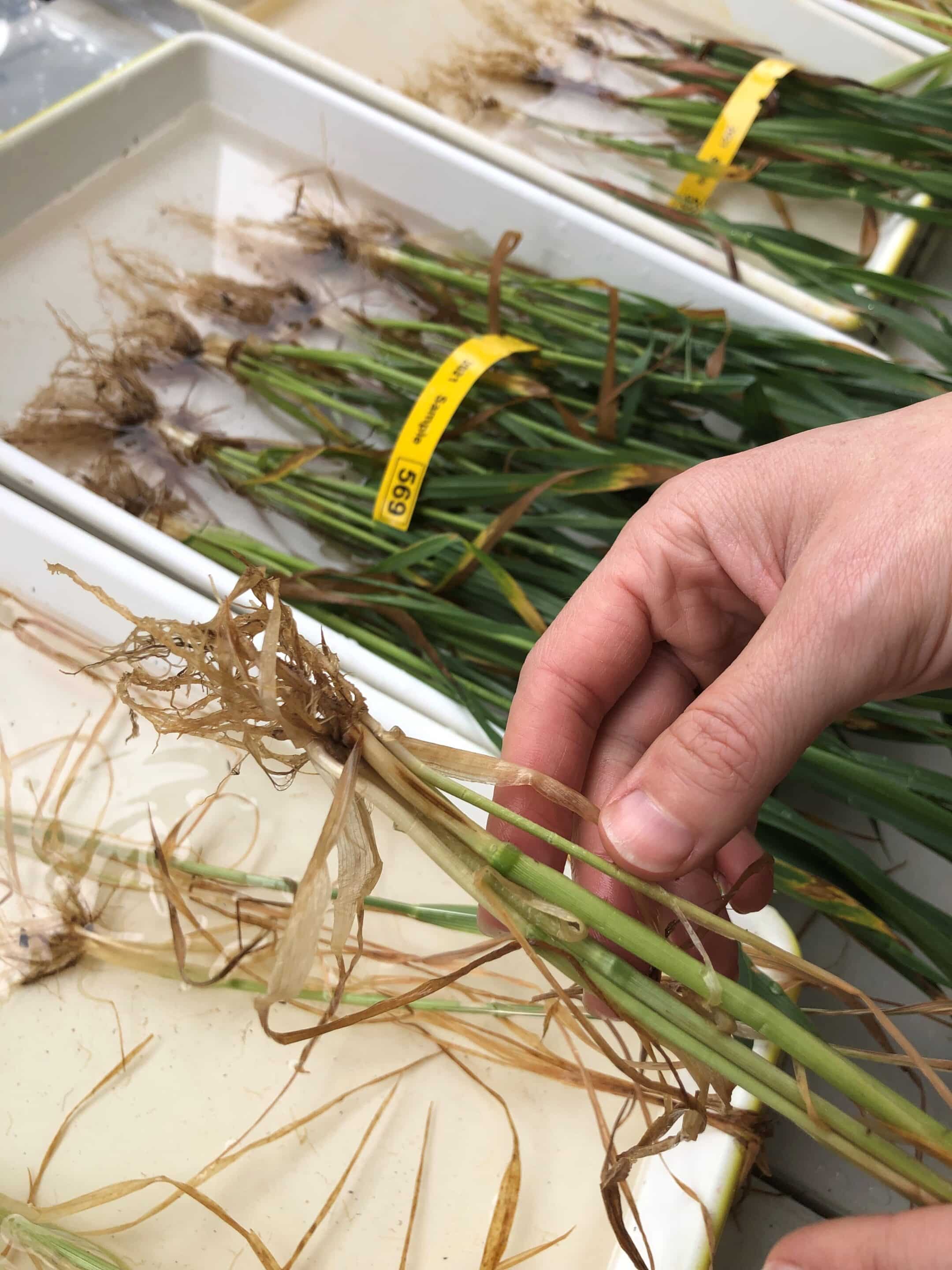START
FINISH

Summary
This study investigated the behaviour and movement of grain and contaminants such as chaff and material other than grain (MOG) during bulk transport. Physical testing of grains on a ship motion simulator showed that contaminants tend to congregate at the container edges.
Discrete Element Method (DEM) computer simulations were validated against the physical tests, confirming that DEM can replicate the movement of grain and contaminants. DEM also showed that modifying container geometry can reduce contaminant congregation. DEM can play a role in improving post-transport sampling to avoid recording falsely high levels of contamination.
Background
When grain is transported in bulk, for example in an export ship, the movement of contaminants such as chaff and MOG can be problematic. For example, contaminants tend to accumulate at the edge of a container, which can lead to inaccurate sampling after transport.
If DEM simulations can be validated against physical testing, it offers a potentially simple and inexpensive method for better understanding the movement and behaviour of grain and contaminants under motion.
Research Aims
The core objectives of the project were to:
- Conduct physical testing to understand how chaff and other contaminants congregate or segregate under the motion of bulk grain transport.
- Validate that Discrete Element Method simulations can be calibrated and accurately represent the movement and behaviour of grain and other contaminants under motion.
In The Field
Chaff (comprising short straw, straw nodes, spikelets and husks) and snails were collected at harvest and added to small bulk quantities of wheat, barley and lentils. Grain samples were placed in a custom-built clear Perspex container (800mm long x 200mm high x 200mm wide) and run for approximately 30 minutes on a ship motion simulator. Photos from the top and the side of the container were taken to quantify the movement of the various materials.
DEM calibration tests, which provide the relevant characteristics of the various particles, were carried out for wheat, barley and lentils as well as chaff and short straws (snail characteristics were unable to be defined accurately enough to be included in the simulations).
Following calibration, a replica of the physical test was set up in the DEM computer simulation interface, based on particle characteristics, grain quantity, and size and shape of the shipping container.
Particle tracking in the computer simulation determined the start and end positions of the chaff particles, which could be compared to quantify the extent of movement. The researchers then quantified the movement of chaff from both the physical testing and the DEM simulation.
Due to the computer processing power required for DEM, there are limitations to the quantity of grain that can be simulated, meaning full-scale bulk container ship simulation is unlikely in the near term.
Results
In physical testing, the chaff particles started off spread randomly throughout the grain bulk. After 30 minutes of motion, the chaff had congregated at the ends of the container. This behaviour was replicated closely in the DEM simulations.
The research confirmed that chaff and other contaminants behave differently to grains under transport-related motion, and that DEM simulation can be calibrated to model the movement of a range of grain types and MOG. DEM simulation was thus validated as a potentially effective tool for predicting this behaviour, and as a means of testing how varying the size and geometry of transport containers can prevent contaminants congregating at the container edges.
Further research on using smaller grain movement vessels, such as chaser bins and trucks, may be warranted.
Project Participants
University of South Australia: Dr Chris Saunders, Francois Fraysse, Simon Modra, Phil Dixon, Mustafa Ucgul.
The Problem
Chaff and other contaminants can congregate at the edges of bulk grain shipments, compromising post-transport sampling.
The research
This study validated a computer simulation method for analysing and predicting the movement of grain and contaminants in bulk transport.
More information
Dr Chris Saunders, University of South Australia
T: 0419 752 292
E: [email protected]
Value for Growers
This pilot study confirmed that DEM simulations can be used to model the movement of grain, chaff and potentially other MOG, such as snails. It paves the way for research that will increase the understanding of how grain, chaff and other contaminants behave in bulk transport.
As access to greater computer power increases, these simulations may reach a scale that informs the development of methods for minimising the segregation of contaminants and their congregation at the edges of shipping container.
Ultimately, this knowledge can improve post-transport sampling, reducing the chance of recording inaccurately high levels of contamination.
Latest Research Projects





